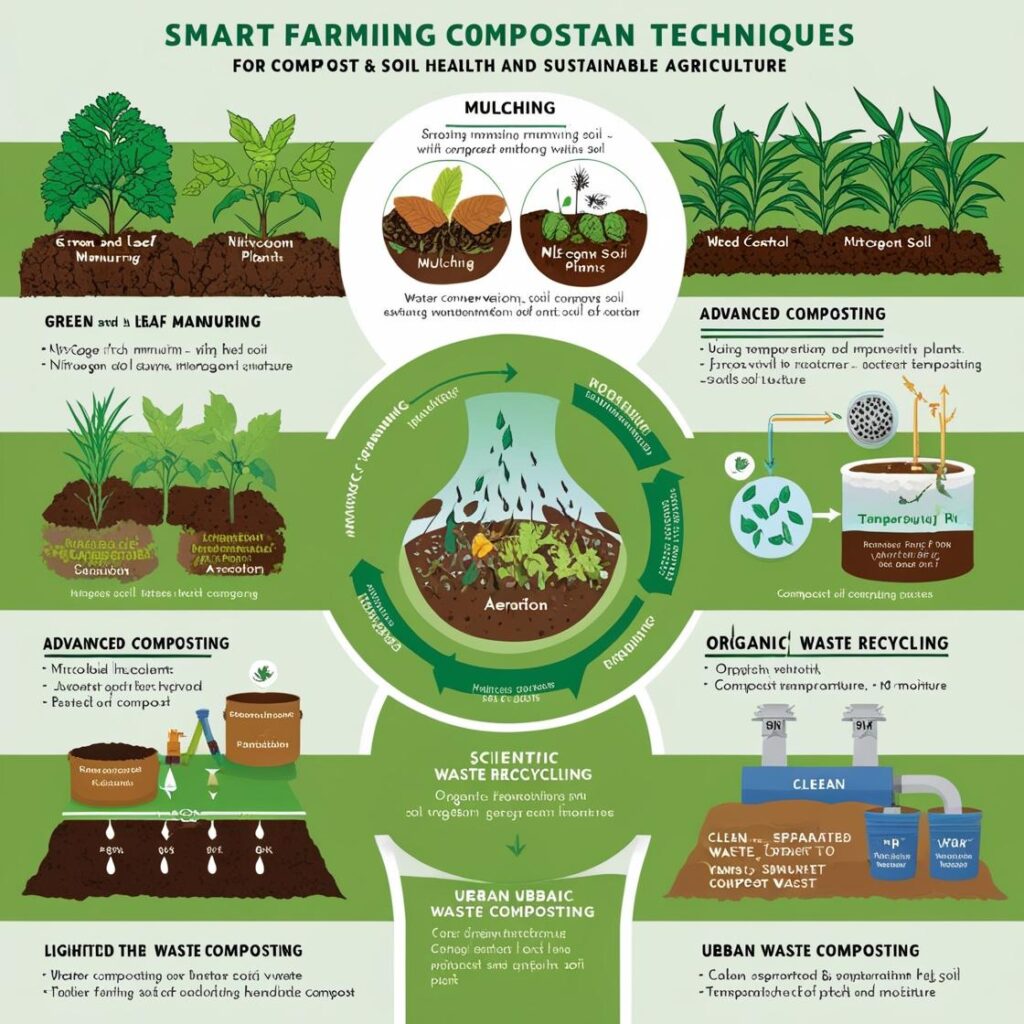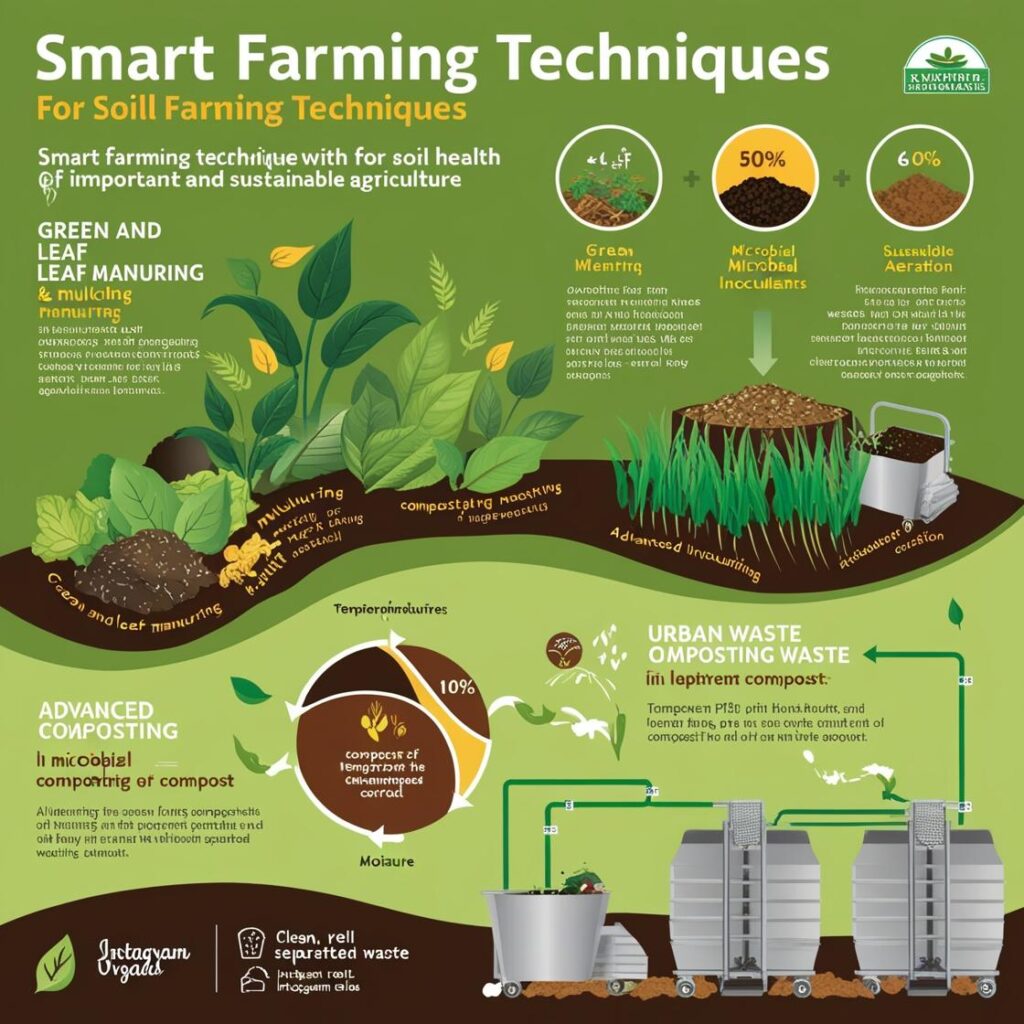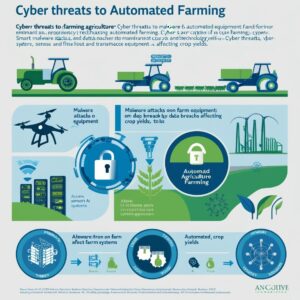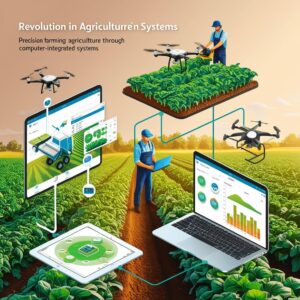Creating nutrient-rich compost from organic materials plays a vital role in sustainable agriculture, especially in regions where soil fertility and crop productivity are declining due to intensive farming. Let’s explore the methods, benefits, and practical tips on transforming organic waste into high-value compost for healthier, more sustainable crops.
The Importance of Compost in Sustainable Agriculture
Composting is an age-old practice, pivotal in transforming farm waste into nutrient-rich soil amendments. Organic and chemical fertilizers, while enhancing productivity, often lead to soil degradation and biodiversity loss. Compost, however, naturally enhances soil health, fertility, and productivity, making it a valuable tool for sustainable agriculture. Whether you’re a seasoned farmer or an agriculture enthusiast, understanding how to optimize composting practices can benefit both soil health and crop yields.
Essential Composting Techniques and Their Benefits
1. Green Manuring and Leaf Manuring
Green manuring involves growing specific plants, like legumes, and then incorporating them into the soil. This practice enriches the soil with essential nutrients, especially nitrogen, benefiting crops naturally. Similarly, leaf manuring uses green leaves from local vegetation to boost the soil’s organic matter content.
- Tip: Choose nitrogen-rich plants (e.g., legumes) for green manuring to enhance soil nutrient levels efficiently.
2. Mulching
Mulching is a protective layer of organic material like straw or leaves spread over the soil. It helps in water retention, temperature regulation, and weed control. Studies show mulching can increase available nitrogen, phosphorus, and other nutrients in the soil, ultimately boosting crop yields.
- Actionable Tip: Try mulching with locally available materials like paddy straw to save water and enhance soil health.
3. Traditional Composting
Traditional composting breaks down various organic residues into humus, which provides nutrients for plant growth and improves soil structure. The process relies on microbial activity, which is affected by factors like temperature, moisture, and oxygen.
- Quick Tip: For faster composting, maintain a balance of “green” materials (high in nitrogen) and “brown” materials (high in carbon) and turn the compost regularly to aerate.
4. Advanced Techniques: Microbial Inoculants and Aerobic Composting
Inoculating compost with beneficial microorganisms can speed up decomposition, making nutrients more accessible. Aerobic composting methods, like the Indore and Bangalore methods, leverage oxygen to support microbial activity, improving compost quality and reducing processing time.
- Practical Insight: Regularly turning compost piles increases oxygen levels, supporting aerobic bacteria and enhancing the decomposition process.
Composting for Enhanced Soil Fertility: Recycling Organic Materials
Organic Waste Sources
Farm byproducts like rice straw, wheat straw, and sugarcane bagasse are valuable sources of organic matter. When used in compost, these materials improve soil health by increasing humus content and boosting the soil’s water-holding capacity.
- Actionable Insight: Instead of burning agricultural waste, recycle it into compost, turning potential pollution into a sustainable resource.
Benefits of Organic Manures
Bulky manures like farmyard manure and green manures provide both macro- and micro-nutrients essential for plant growth. Concentrated organic manures (such as blood meal and fish meal) offer a higher concentration of nutrients like nitrogen and phosphorus, promoting robust plant health.
- Tip for Implementation: Apply a mix of bulky and concentrated manures to provide a well-rounded nutrient profile for crops, enhancing both soil structure and fertility.
Modern Approaches in Composting: Scientific Insights and Innovations
Mulching for Water Conservation and Soil Stability
Research underscores mulching’s ability to reduce soil erosion, retain moisture, and boost organic matter in the soil. This technique benefits from a variety of mulch types, including legume-based mulches, which naturally add nitrogen to the soil.
Composting: A Microbial Symphony
Composting relies on diverse microorganisms that thrive under specific conditions. Temperature, pH, and moisture all influence microbial activity, determining compost quality. Advanced composting methods incorporate nitrogen-fixing bacteria to accelerate the process and enrich compost nutrient content.
- Tip: Maintain compost temperatures between 55-65°C to support microbial activity and optimize nutrient availability.
Urban Waste Composting
Urban and municipal solid waste can be transformed into high-quality compost when treated correctly. Modern techniques focus on minimizing contamination and enhancing microbial diversity to produce safe, nutrient-rich compost suitable for agriculture.
- Practical Advice: For community composting, separate organic waste at the source to reduce contamination and improve compost quality.
Key Takeaways for Instagram Reels & Infographics:
- The Importance of Composting: Vital for soil health, biodiversity, and sustainable agriculture.
- Green and Leaf Manuring: Enrich soil naturally with nitrogen-rich plants and local leaves.
- Mulching Benefits: Saves water, controls weeds, and improves soil structure.
- Advanced Composting Tips: Use microbial inoculants and aeration for quicker results.
- Organic Waste Recycling: Transform waste into compost instead of burning.
- Scientific Innovations: Temperature, pH, and moisture are key to quality compost.
- Urban Waste Composting: Clean, separated waste makes the best compost.
In summary, composting is not only an age-old technique but also a scientifically backed practice essential for sustainable crop productivity and soil health.
This passage provides a detailed analysis of composting as a critical process for improving soil productivity and ecological health. High-quality compost enhances soil productivity by providing essential nutrients and retaining optimal moisture levels. However, poor-quality compost can detrimentally impact soil health due to potential toxic heavy metal accumulation and nitrogen immobilization.
The importance of compost quality is underscored, with the Bureau of Indian Standards (BIS) (2013) setting specifications for municipal solid waste-derived compost. These include parameters for physical properties (e.g., particle size, bulk density, and moisture content), chemical thresholds (e.g., Cratio, arsenic, cadmium, chromium, zinc, and mercury levels), and nutrient content (e.g., total organic carbon, nitrogen, phosphorus, and potassium).
Ecologically, composting depends on microbial community dynamics, with various bacteria, fungi, and actinobacteria types playing roles in organic decomposition through enzyme activity. These microbes thrive in different stages, from mesophilic to thermophilic phases, influenced by environmental factors such as temperature, pH, and oxygen levels. Notably, the activity of thermophilic microorganisms at temperatures above 60°C is crucial for pathogen suppression and compost maturation.
Composting can take 6 to 12 months, with the process affected by environmental conditions like gas emissions and volatile organic compounds (VOCs). Techniques to assess compost quality and maturity, such as thermal assessments and organic material transformation analysis, help ensure that composting yields a high-value, pathogen-free, mature product conducive to soil health and agricultural benefits.
The enrichment process in composting primarily focuses on optimizing nutrient levels in compost by enhancing plant residue decomposition, supplementing with inorganic nutrients, and balancing carbon-to-nitrogen (C) ratios. This process incorporates organic plant residues (leaves, stems, roots), which are rich in essential nutrients, into the soil to increase soil fertility and crop productivity. These organic materials, which naturally contain nitrogen, phosphorus, and potassium, decompose through composting, with the help of microorganisms that break down complex organic compounds into accessible nutrients for plant uptake.

- Nutrient Enrichment:
- Enrichment with inorganic fertilizers like urea, ammonium sulfate, or rock phosphate has been shown to improve nutrient content in compost, enhancing soil productivity. For instance, nitrogen addition helps maintain nitrogen levels vital for plant growth. However, balancing the amount of nitrogen is critical to avoid nitrogen loss through volatilization, leaching, or immobilization.
- CRatio:
- The Cratio plays a significant role in compost quality and maturity. An optimal Cratio, generally around 25–30:1, promotes effective microbial activity for decomposition. Low Cratios can lead to nitrogen loss as ammonia, while high Cratios slow microbial growth and decomposition, prolonging the composting process.
- Role of pH and Temperature:
- Maintaining a suitable pH (around 7.5) and temperature (thermophilic range, 54-70 °C) is essential. Lower pH levels and high temperatures can inhibit composting microorganisms, while optimal conditions enhance microbial efficiency and nutrient conversion.
- Use of Microorganisms:
- Introducing cellulolytic fungi, nitrogen-fixing bacteria, and phosphate-solubilizing organisms like Aspergillus niger helps decompose organic material faster and makes nutrients available to plants. These microorganisms improve the release of nitrogen, phosphorus, and other micronutrients while reducing phosphate fixation and nutrient losses in soil.
- Supplementing with Calcium and Phosphates:
- Calcium and phosphates stabilize pH and support nitrogen conservation. For example, calcium salts aid nutrient availability in acidic soils, and rock phosphate can conserve nitrogen during decomposition.
Overall, enriched compost improves soil health by boosting nutrient content and maintaining soil structure, moisture retention, and microbial activity—factors crucial for sustainable crop growth. Through optimized composting practices, both organic residues and inorganic supplements create a balanced nutrient profile suitable for various crops, enhancing agricultural productivity while minimizing environmental impacts.
Composting plays a significant role in enhancing agricultural productivity by recycling organic waste into nutrient-rich compost, which improves soil fertility, structure, and plant growth. Compost quality depends on the raw materials and microbial activity involved in the composting process, where microbial succession is essential in compost maturation. Stable compost provides a more consistent nutrient supply, which is critical for effective soil amendment (Weppen 2002).
In low-input farming systems, nutrient deficiencies and poor soil structure hinder crop productivity. Organic residue application addresses these issues by supplying nutrients and improving soil structure, including the addition of essential trace elements (Courtney and Mullen 2008). In contrast to chemical fertilizers, organic compost maintains soil microbial biodiversity and quality, crucial for sustainable agriculture. Studies show that compost amended with beneficial bacteria can suppress plant diseases caused by pathogens like Fusarium and Pythium, while plant hormones in compost can enhance crop growth and yield (Dukare et al. 2011; Zahir et al. 2007).
Composting not only improves soil but also supports eco-friendly farming practices by reducing reliance on chemical fertilizers, which may have adverse environmental impacts. The life cycle assessment (LCA) of compost highlights multiple benefits, including nutrient supply, carbon sequestration, pest suppression, crop yield increase, and enhanced soil biological properties, which contribute to sustainable food production (Martínez-Blanco et al. 2014).
Overall, composting organic waste offers promising potential for sustainable agriculture, reducing pollution, and supporting agro-industry growth through environmentally friendly practices. Future research should focus on optimizing composting methods to maximize these benefits and encourage broader adoption of compost technologies in agriculture.
Tracking Leader Vehicle Trajectories with Vision-Based Navigation for Agricultural Vehicles
Imagine a farming system where a single driver controls not just one vehicle but a small fleet, with a “leader” vehicle navigating, and “follower” vehicles trailing, carrying out essential agricultural tasks. This study explores a fascinating technological development designed to achieve just that! With a vision-based leader-follower system, agricultural operations can be automated, enhancing efficiency and accuracy in the field.
Introduction: The Power of Multiple Autonomous Agricultural Vehicles
In the vast world of agriculture, using multiple autonomous vehicles could be revolutionary. Think of farming tasks—sowing, plowing, fertilizing, or harvesting. Now, imagine autonomous machines independently coordinating to complete these activities efficiently. This article delves into the engineering marvel behind the vision-based leader-follower navigation system for agricultural vehicles, explaining its components, techniques, and field tests.
1. The Vision-Based Leader-Follower System: Breaking Down the Technology
This navigation system uses a human-operated “leader” vehicle that is followed by an “autonomous” vehicle, relying on camera-based technology to maintain precise tracking. This setup allows one driver to oversee and direct multiple vehicles.
- Monocular Vision Sensing: A high-quality camera on the follower vehicle identifies the leader vehicle, assisted by markers on the leader to ensure visibility, even under variable lighting.
- Noise Reduction: Using the least-squares method, noise in data collection is reduced, improving the accuracy of the information relayed from the camera to the follower’s controller.
2. The Control Mechanism: How the Follower Stays on Track
To keep the follower vehicle accurately trailing the leader, a feedback control algorithm is employed. The follower’s distance and orientation are constantly adjusted based on the information received from the camera.
- PID Controller: A proportional-integral-derivative (PID) controller helps maintain the desired distance between the vehicles. The controller ensures that the follower doesn’t drift off course, even as it trails at 0.3 m/s.
3. Field Tests: How Well Does It Work?
Field experiments tested the system on three types of paths: straight, turning, and zigzag. The results were promising, showcasing the follower’s impressive accuracy:
- Straight Path: 6.5 cm RMS error
- Turning Path: 8.9 cm RMS error
- Zigzag Path: 16.4 cm RMS error
When tested in parallel formation, errors were also minimal, making this system highly effective in both alignment and parallel operations.
4. Advantages of Vision-Based Systems Over GPS
Unlike GPS, which is prone to signal issues in areas with heavy foliage or other obstacles, the vision-based system with local cameras and markers provides stable data in both indoor and outdoor conditions. This reliability makes it especially suitable for complex farm environments.
- Low Cost: Cameras are cost-effective compared to GPS setups, allowing for budget-friendly expansion across larger fields.
- Marker-based Recognition: Markers on the leader vehicle aid the follower in accurate detection and positioning, ensuring stable operation regardless of lighting.
Key Features of the Leader-Follower Positioning System
Camera Servo System
The camera servo system is designed to keep the markers in view, preventing the follower from losing sight of the leader, especially on curved paths.
Marker Detection & Positioning
By recognizing the leader’s markers, the follower vehicle’s camera identifies the leader’s location and orientation, crucial for accurate tracking.
Final Takeaways and Practical Tips
For farmers and agronomists considering automated systems:
- Efficiency and Control: This system can reduce labor demands by allowing one driver to manage multiple vehicles.
- Improved Accuracy: Vision-based systems perform well in various environments, making them versatile for different crop layouts and farm designs.
- Affordability: Compared to GPS setups, this camera-based system offers a low-cost alternative that is easy to scale.
Summary for Social Media Content
- Innovative Technology: Vision-based leader-follower system for agricultural vehicles.
- Precision Tracking: Achieves high accuracy across multiple path types.
- Field Tested: Reliable performance in real-world conditions.
- Low-Cost Solution: Budget-friendly alternative to GPS.
This revolutionary system could become a staple i














n agriculture, transforming how we approach farming efficiency and automation.
This study focuses on using monocular camera vision for real-time tracking of a leader-follower vehicle system, specifically designed for farm environments. Due to inherent vision limitations, data estimation and smoothing techniques are applied to mitigate noise in relative position readings, a common challenge in adverse field conditions.
Key Techniques Employed:
- Least-Squares Data Estimation and Smoothing: Given the noisy data from the monocular camera, especially under conditions like poor illumination or uneven terrain, the least-squares method fits a quadratic curve to smooth and estimate relative distances and angles between the leader and follower vehicles. This curve fitting maintains continuity in tracking data and avoids abrupt changes that could disrupt following accuracy.
- Control Law for Leader-Follower Tracking: The follower relies only on its relative position to the leader, rather than absolute positional data, making the system adaptable but also challenging in terms of accuracy. To manage this, a feedback-based control point on the follower vehicle guides its alignment with the leader’s trajectory, accounting for both longitudinal and angular errors.
- PID Control for Distance Maintenance: By keeping a set distance (
d01) between vehicles, the system adjusts the follower’s velocity via a PID controller based on error calculations from the observed and required distance. - Field Testing and Validation: Through static and dynamic tests, such as straight, turning, and zigzag paths, the system’s performance was validated. These tests showed that data smoothing reduced RMS errors in distance and angle estimation, improving accuracy. The leader-follower trajectory tracking accuracy was sufficient for agricultural tasks with low tracking errors on straight paths and manageable deviations on turns and zigzag paths.
Results:
- The least-squares fitting reduced data noise significantly, aligning camera readings with reference laser data.
- Maximum and RMS tracking errors were within acceptable limits for most agricultural applications, demonstrating the system’s robustness in stable and controlled field conditions.
Conclusion:
The developed system, leveraging camera vision, data smoothing, and PID control, proved effective for follower vehicle tracking in agricultural operations. The approach shows potential for real-sized tractors, offering a viable low-cost solution with high tracking accuracy and reduced dependence on additional sensors, though further enhancement is needed for varied terrain and lighting conditions.
Enhancing Agricultural Automation with Camera Vision Data Estimation and Smoothing for Leader-Follower Systems
The world of agricultural automation is constantly advancing, and one exciting area of development is leader-follower systems. By using a low-cost monocular camera system and advanced data estimation techniques, researchers have made strides in enabling an autonomous follower vehicle to track a human-driven leader, creating a synchronized, labor-efficient solution. Below, we’ll break down the key techniques used, including data estimation, trajectory smoothing, and the control mechanisms that make this process effective, even under challenging farm conditions.
1. Challenges with Monocular Vision Systems in Agriculture
- Noisy Data in Challenging Conditions: The single-camera approach (monocular vision) faces issues with accuracy, particularly under uneven terrain, high sunlight, or variable contrast conditions, which can distort the camera’s perception.
- Data Gaps and Failures: In some cases, the system may fail to detect markers, resulting in large positional errors. Addressing these errors through data estimation and smoothing techniques is essential for continuous and reliable vehicle tracking.
2. Estimation and Smoothing Techniques
- The Role of Least-Squares Estimation: To counteract noisy data, the least-squares method was used to smooth and estimate the relative position and heading angle between the leader and follower vehicles. By fitting the latest data points to a quadratic curve, the system can maintain a continuous estimation of the leader’s position.
- Quadratic Curve Fitting: Stored observation data points are fitted to a quadratic curve, improving the accuracy of relative distance and angle measurements (denoted as D and β, respectively).
- Two-Step Smoothing Process:
- Data Updating: Once a new observation is recorded, it is added to the stored sequence of data points, and the latest position is updated.
- Quadratic Curve Fitting for Smoothing: After data is fitted to the quadratic curve, the smoothed values are compared to threshold limits, refining the tracking accuracy by maintaining the data within a defined range.
3. Design of the Leader-Follower Control System
- Feedback Control for Tracking: Without any communication between the leader and follower vehicles, the follower relies solely on relative position data. A feedback control system aligns the follower’s position with the leader’s trajectory.
- PID Controller for Stability: The PID controller ensures that the follower maintains a stable distance from the leader by adjusting the speed and steering based on the error in distance and angle. This is critical for maintaining safe and smooth operation on the field.
- Adaptive Control Parameters: As the required tracking distance and angle change, the PID parameters also adapt, providing the flexibility needed in real-world agricultural operations.
4. Field Experiments: Testing the System’s Robustness
- Static and Dynamic Evaluation: Field tests at the University of Tsukuba involved both static and dynamic conditions to validate the camera system’s accuracy. A laser-based reference system (LRF) was used to compare and verify camera data.
- Tracking Various Path Types: Experiments included straight, turning, and zigzag paths to simulate typical agricultural operations. The leader vehicle maintained a speed of 0.3 m/s, while the follower tracked from a set distance.
- Results and Performance Metrics:
- Relative Position Errors: After smoothing, the errors for relative distance and angle were reduced to 4.6 cm and 2.87°, respectively, under dynamic conditions.
- Tracking Accuracy on Curved Paths: On curved paths, the maximum tracking error was 35 cm, but remained consistently low on straight paths (below 12.5 cm).
5. Challenges with Lighting and Terrain
- Illumination Effects: Low light and direct sunlight reduce image contrast and affect the system’s ability to detect markers. A histogram-based contrast enhancement was used to improve reliability under variable lighting.
- Uneven Terrain: Vertical movement due to uneven ground was not accounted for in this setup, limiting the system’s accuracy under certain farm conditions. However, the system’s design remains resilient for relatively flat agricultural fields.
6. Scaling for Real-World Applications
- The research prototypes demonstrated that, with a larger tractor, the same vision-based tracking system could provide significant productivity gains by reducing labor needs. As the system is further refined, it holds great potential for broader agricultural deployment in tracking field operations like harvesting, planting, and more.
Conclusions
By using a simple monocular camera system, combined with effective data smoothing and control algorithms, researchers have paved the way for practical, autonomous leader-follower systems in agriculture. This system not only ensures stable and accurate tracking in controlled environments but shows promise for deployment in larger-scale farming operations, making efficient use of both human and robotic labor. As camera vision technology improves, these systems could soon become a staple in precision agriculture.

About Us
Welcome to Agriculture Novel, your go-to source for in-depth information and insights into the world of agriculture, hydroponics, and sustainable farming. Our mission is to educate, inspire, and empower a new generation of farmers, hobbyists, and eco-conscious enthusiasts. Whether you’re interested in traditional farming practices or modern innovations, we aim to provide comprehensive guides, expert tips, and the latest updates in agriculture and urban farming.
At Agriculture Novel, we believe in the power of knowledge to transform the way we grow, sustain, and nourish our world. Explore our articles on topics like Fruit Growing Guide, Hydroponics, Plant Deficiency Guide, and more.
Thank you for joining us on this journey towards a greener, more sustainable future!
About Agronique Horizon
At Agronique Horizon, we specialize in delivering comprehensive digital marketing and web development solutions tailored for the agriculture and hydroponics industries. From custom website design and app development to social media management, we provide end-to-end support for brands aiming to make a meaningful impact. Our team also offers innovative solutions for the real estate sector, bringing precision and visibility to your projects. Learn more about our services here and discover how we can elevate your digital presence.



